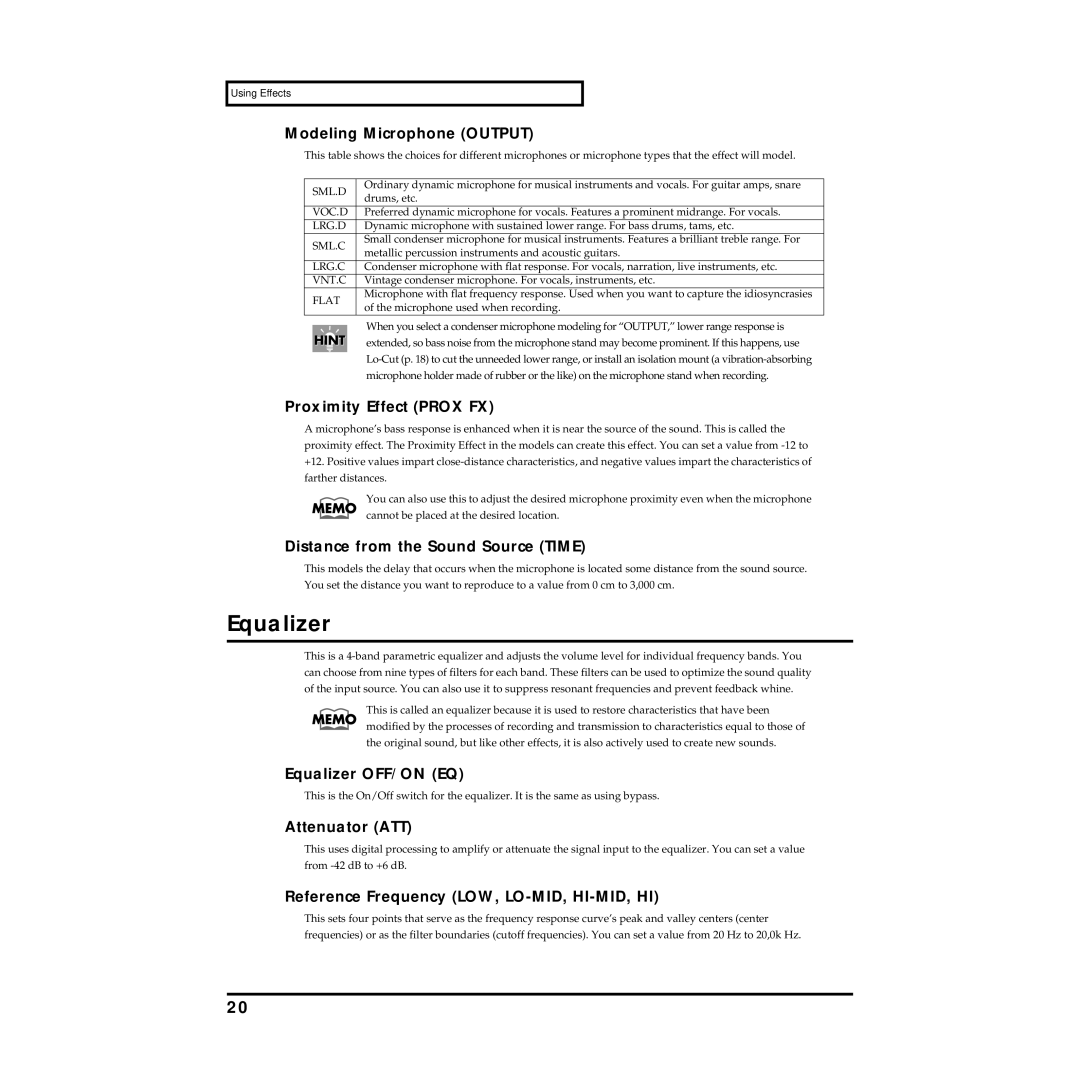
Using Effects
Modeling Microphone (OUTPUT)
This table shows the choices for different microphones or microphone types that the effect will model.
SML.D | Ordinary dynamic microphone for musical instruments and vocals. For guitar amps, snare | |||
drums, etc. | ||||
|
|
| ||
VOC.D | Preferred dynamic microphone for vocals. Features a prominent midrange. For vocals. | |||
LRG.D | Dynamic microphone with sustained lower range. For bass drums, tams, etc. | |||
SML.C | Small condenser microphone for musical instruments. Features a brilliant treble range. For | |||
metallic percussion instruments and acoustic guitars. | ||||
|
|
| ||
LRG.C | Condenser microphone with flat response. For vocals, narration, live instruments, etc. | |||
VNT.C | Vintage condenser microphone. For vocals, instruments, etc. | |||
FLAT | Microphone with flat frequency response. Used when you want to capture the idiosyncrasies | |||
of the microphone used when recording. | ||||
|
|
| ||
|
|
| When you select a condenser microphone modeling for “OUTPUT,” lower range response is | |
|
|
| ||
|
|
| extended, so bass noise from the microphone stand may become prominent. If this happens, use | |
|
|
| ||
|
|
| microphone holder made of rubber or the like) on the microphone stand when recording. | |
Proximity Effect (PROX FX)
A microphone’s bass response is enhanced when it is near the source of the sound. This is called the proximity effect. The Proximity Effect in the models can create this effect. You can set a value from
You can also use this to adjust the desired microphone proximity even when the microphone cannot be placed at the desired location.
Distance from the Sound Source (TIME)
This models the delay that occurs when the microphone is located some distance from the sound source. You set the distance you want to reproduce to a value from 0 cm to 3,000 cm.
Equalizer
This is a
This is called an equalizer because it is used to restore characteristics that have been modified by the processes of recording and transmission to characteristics equal to those of the original sound, but like other effects, it is also actively used to create new sounds.
Equalizer OFF/ON (EQ)
This is the On/Off switch for the equalizer. It is the same as using bypass.
Attenuator (ATT)
This uses digital processing to amplify or attenuate the signal input to the equalizer. You can set a value from
Reference Frequency (LOW, LO-MID, HI-MID, HI)
This sets four points that serve as the frequency response curve’s peak and valley centers (center frequencies) or as the filter boundaries (cutoff frequencies). You can set a value from 20 Hz to 20,0k Hz.
20
